When I was first thinking of starting this blog, the flavor I was most excited to try my hand at was ube. Although I didn’t eat it growing up, it has, over the last number of years, come to be one of my favorite flavors. Part of it, no doubt, is the stunning purple color. But mostly it was the flavor that won me over. If you do a Google search for what ube tastes like, you’ll see it described as “nutty” with “hints of vanilla.” I think that’s generally right, but sometimes when you try to describe one flavor by likening it to other flavors, it just doesn’t work. Ube, in the end, tastes like ube, and that taste, in my opinion, is quite delicious. The point is this: ube ice cream is, in a way, responsible for the existence of this blog. And now the time has finally come to make some.
For those who may not know, ube halaya—or ube for short—is a Filipino jam made from purple sweet potatoes. More importantly, it is a staple of Filipino cooking / dessert making. You can find ube cakes, ube pies, ube cookies, ube milk buns1, ube donuts, etc, etc. And, of course, ube ice cream!
I’m doubly excited about this week’s effort because it’s my first attempt at using a recipe from Adrienne Borlongan’s The World of Ice Cream. She has an Ube Malted Crunch recipe in her book that’s been calling out to me since I purchased it.
For this week, however, I decided to leave out the malted crunch portion of the recipe and just focus on making an ube base. Let’s get into it!
The first order of business is to mention that I did not follow Borlongan’s recipe all that closely. I used guar gum instead of tara gum. I used corn syrup instead of glucose powder. I omitted the milk powder and malt powder. But I hewed closely to the spirit of the recipe! In other words, the dairy, sugar, and ube flavoring proportions.
It’s worth repeating something I noted about Borlongan’s book in an earlier post: her recipes are slightly more complicated than most other ice cream recipes. This is primarily an issue of the number of ingredients and the measurements (which are very precise and often involve both a tablespoon and teaspoon of the same ingredient) as opposed to technique, but it definitely makes the recipes feel more daunting. At least that’s been my experience in making this particular recipe.
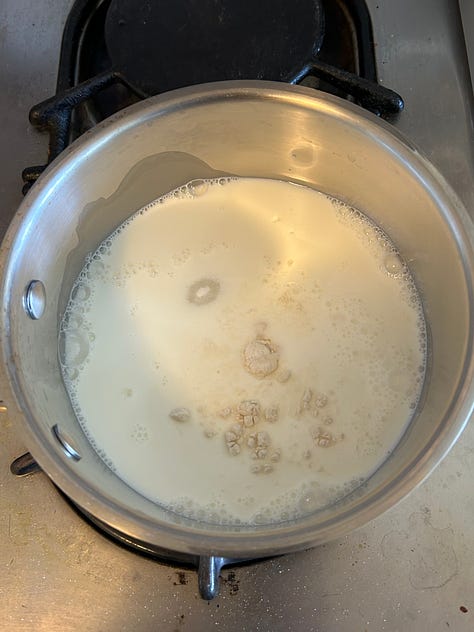
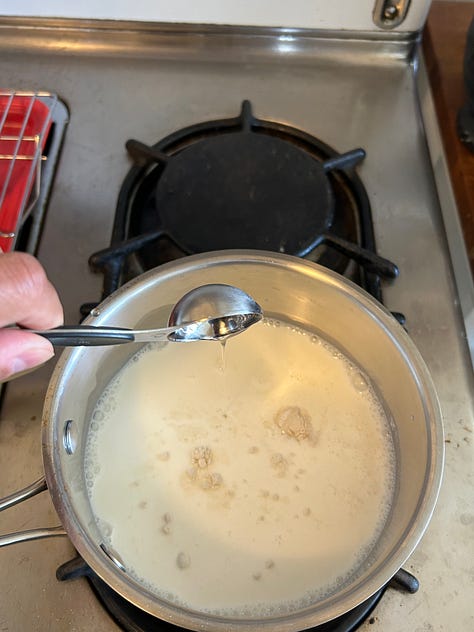



To assemble the base, you start by combining the sugars, guar gum, haleya jam, milk and condensed milk and then heating it to 165°F on the stove. Then you take it off the heat, immersion blend the mixture, and let it cool (Borlongan says to immersion blend it first and then heat it, but whatevs).
After the milk mixture cools somewhat, you add the heavy cream and immersion blend it again. Borlongan is big on immersion blending, as it helps achieve a fully homogenized mixture. I like using my immersion blender, so I fully endorse this technique!
Once all the ingredients are together, you add what is, according to Borlongan, the key ingredient: ube extract.
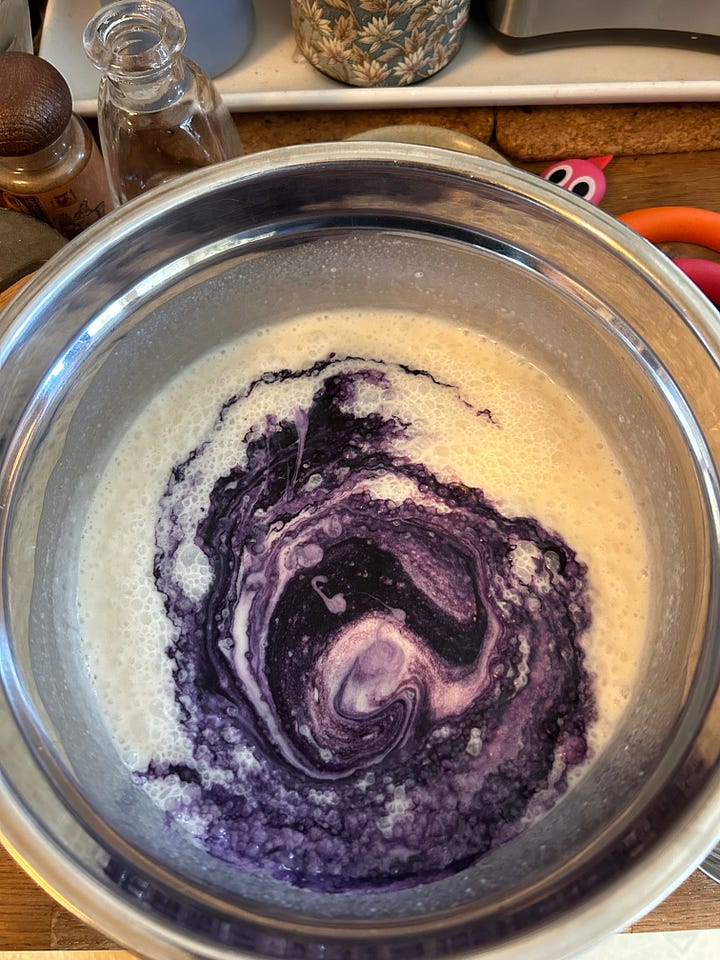
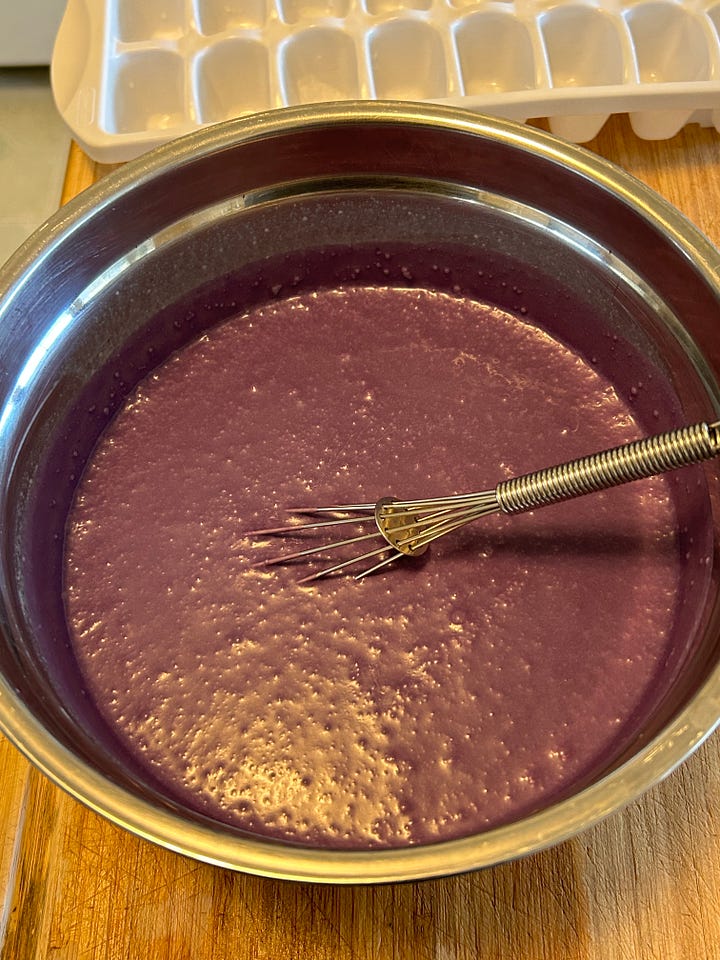
In addition to providing the iconic purple color, Borlongan notes that ube extract is crucial to achieve the classic ube flavor. In fact, she’s quite adament about it, writing:
The ube extract is essential to this recipe in order to get the full ube flavor…the flavor that many people associate with ube is mostly artificial and comes from ube flavoring. Don’t let anyone tell you otherwise.
I’m glad I ordered both the ube extract and halaya jam from Amazon!2
I let the mixture sit in the fridge overnight…leading to another case of early morning ice cream churning. Making ice cream at an early hour reminds me of this commercial from back in the day:
Anyway, here’s your churning video:
Another detail worth mentioning: most recipes for homemade ice cream call for about 3 cups of dairy, with the proportions being 1:1 cream to milk or 2:1 cream to milk. Borlongan uses a 1:1 ratio of cream to milk, but calls for 1 and 3/4 cup of each, resulting in a half cup more of base than your standard recipe. Because of this, I churned the ice cream in two batches. Each batch took about 25 minutes to finish.
As I was transferring the ice cream into containers, I could detect a mild scent of ube. A sign, I think, that the results were gonna be good!
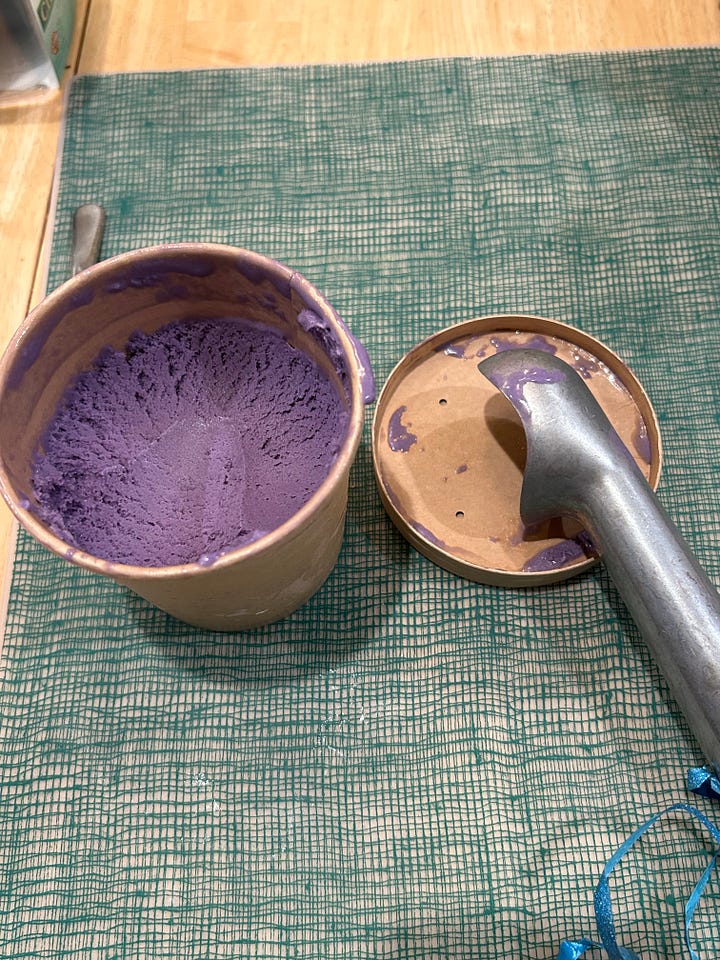
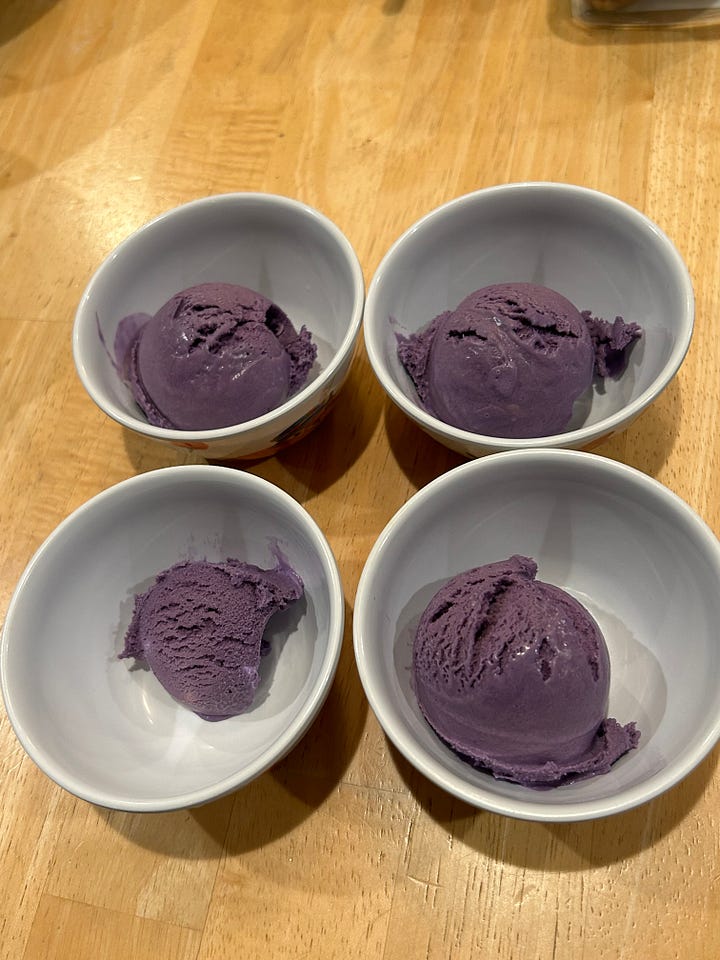
The taste here was unsurprisingly delicious.3 Taste is rarely the problem when you make ice cream. It’s just sugar, dairy, and flavoring. Whether it succeeds or fails all comes down to consistency (usually).
And on that note, I think I may have cracked the ice cream code: guar gum and corn syrup. Every time I’ve used those two in combination (along with the other staple ingredients), the texture has been outstanding. This week was no exception. I let it sit out for about ten minutes before scooping, but as you can see above, it scooped out beautifully and easily.
I only had one scoop this evening, but I’ve seen enough: I’m chalking this one up as a clear win for Borlongan. Her book is full of flavors that sound delicious, and I’ll definitely be making more of her recipes in the future. If you’re ever in LA, I recommend checking out her ice cream shop, Wanderlust. They have multiple locations.
Next up: Maple Walnut for the Thanksgiving holiday. See you then!
Notes & Errata
Even though I usually share at least half of the ice cream I make each week with family or friends, I’ve rarely incorporated their opinions into the blog itself. For last week’s POG sorbet, my sister-in-law had very positive things to say about it. She also noted that it tasted almost like Grapefruit sorbet. Which I think describes it perfectly. I’m adding Grapefruit sorbet to the Flavor queue.
A former work colleague and friend recently got a Ninja Creami, and has been sharing some of their creations with me. One of them was Black Sesame with Crystalized Ginger. It looked exquisite! It made me think I should try making Black Sesame with candied orange bits. Even more than that, it’s got me entertaining the idea of getting a Ninja Creami. Stay tuned!
Since publishing the post on the Spiced Green Apple Sorbet, my apple intake has dropped significantly. Now I feel like I should be eating more apples. I just thought I would share that.
I’ve mentioned this before, but it bears repeating: this hobby of mine is not cheap.
It is true that ube is reminiscent of vanilla, but in reality, I think it’s closer to coconut. I’ve ordered a scoop of ube ice cream with a scoop of coconut ice cream in the past, and on those occasions, they always struck me as similar.




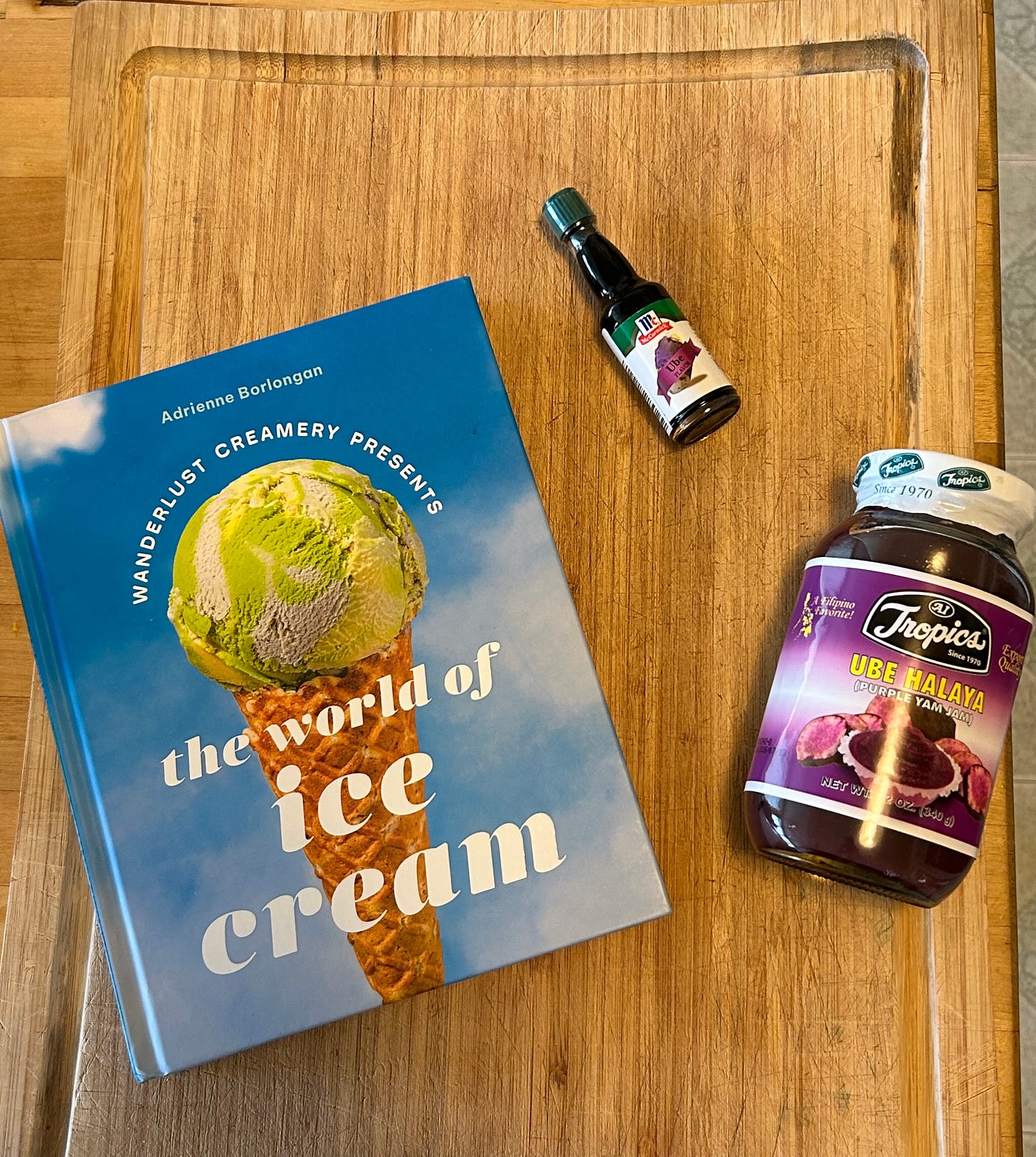

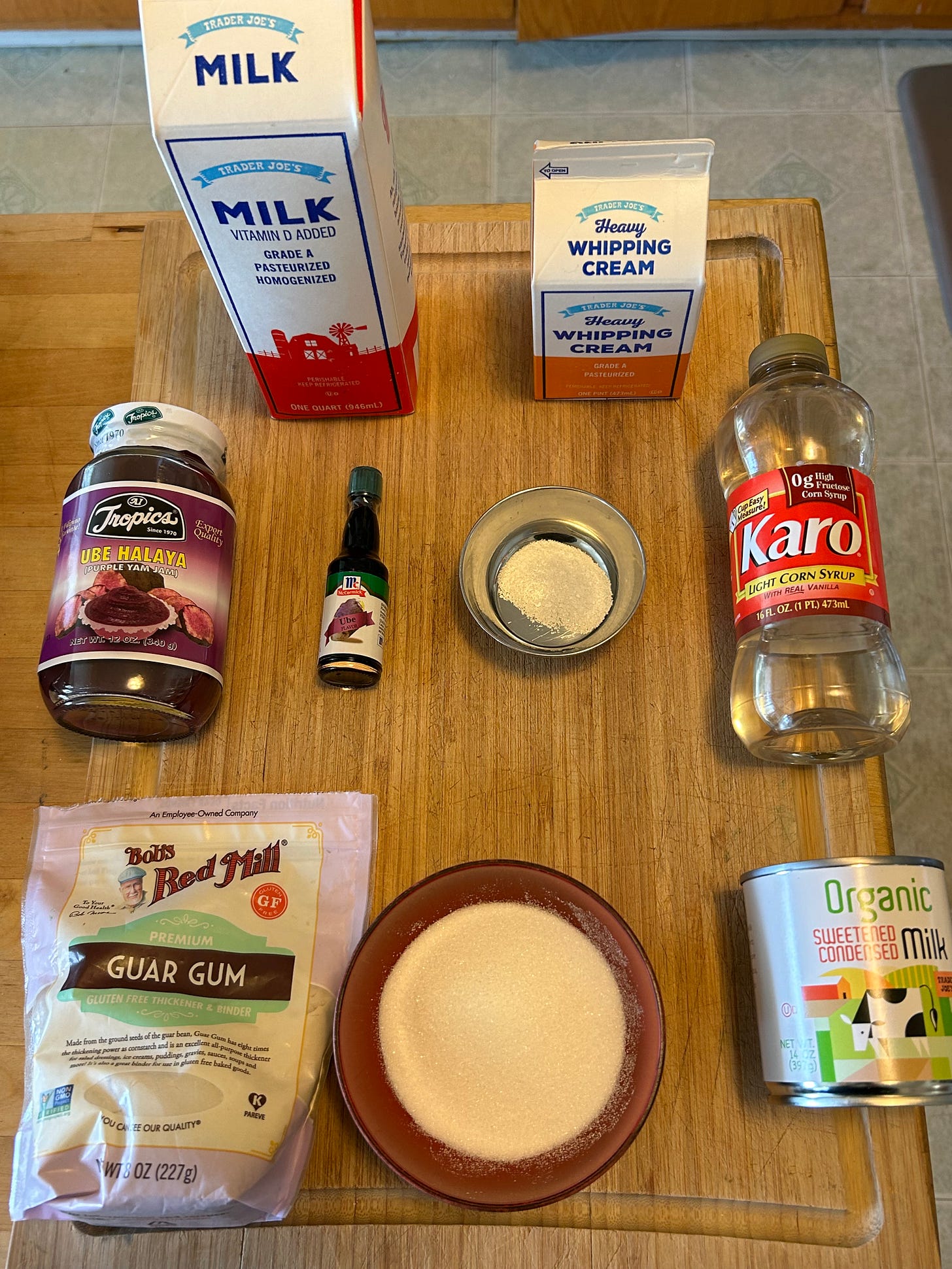


Yesssss